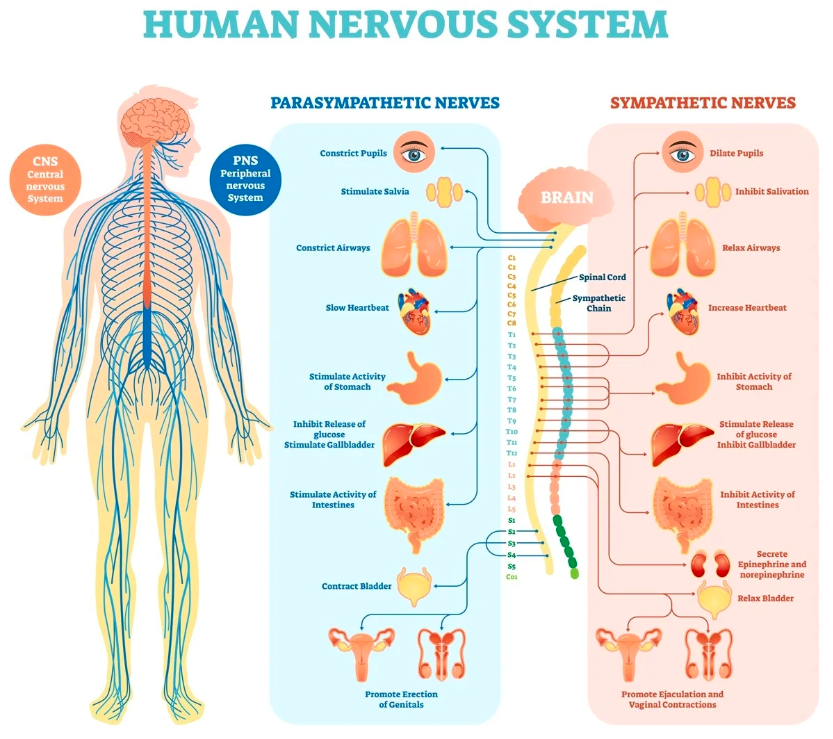The Pitfalls of False Positivity and The Power of Embracing All Your Emotions.
February 8, 2019

In a world increasingly saturated with Instagram-worthy moments and motivational quotes. It’s easy to get caught up in believing that any emotion that isn’t positive and “all good vibes” is wrong. We’re bombarded with messages that encourage us to embrace a relentlessly upbeat attitude; to paint on a smile even when we may be drowning. My theory is that the emotions that often get a bad rep are necessary. And even make those “sweet” emotions that much sweeter. Too much sweet while denying the bitter is what leads to what we call “False positivity”. Today let’s look at the pitfalls of false positivity and the power of embracing all your emotions.
While optimism and positivity have their place in keeping us in a healthy mental state. It doesn’t mean that there isn’t also a crucial place for emotions such as sadness, anxiety and longing. It especially doesn’t mean that these AREN’T contributors to a healthy mental state as well.
How can positivity be false?
In techniques like visualisation and manifestation the idea is that you put yourself into that desired state. These are powerful techniques and are not the same as false positivity. This is because those emotions are ones’ you want to feel. You’re showing up in ways in order to get closer to that goal and way you want to feel. With these techniques you are not denying the challenges that will come along with pursuing your goals or life mission.
False positivity on the other hand refers to an insincere display of positive emotions or optimism. Often used to mask or deny negative emotions, challenges, or issues. It involves putting on an overly positive mask instead without addressing the underlying issues or acknowledging your true feelings. While this seems rather similar; these small key differences are what separates us. The separation being those leading authentic lives from those who suffer potential long-term emotional or psychological consequences.
But Chelsea – You’re such a positive person…
Many people consider me to be a positive person. And all of the content that I share has a vibe of positivity to it. I think there is a lot of confusion around this word and its pretenses as well as the pressure that it puts on society as a whole.
My messages do not emit positivity because I am positive all the time. That would be a lie. My transparency about my emotions in my social media content bears truth to what I am saying. I always remember one of the first times I (publicly) got real about a tough time I was having. I was grateful for the flood of supportive comments that came rushing in AND they also really irked me. One side of social media showed me how my online community cares for me while the other highlighted how fearful people are of negative emotions and how they don’t even want others to feel it (even if just for a brief period).
Early on in my coaching journey I came across an emotional vibration analysis frequency chart that I feel puts emotions into a more relatable context:
Emotional Vibration Analysis Frequency Chart:
The Emotional Vibration Analysis Frequency Chart is a tool designed to categorise and measure the vibrational frequencies of different emotions. This chart aims to help us understand and navigate our emotions. It consists of different emotions organized based on their perceived frequencies, with the idea that some emotions vibrate at higher frequencies than others. Understanding this chart involves delving into its background, structure, and how it categorizes emotions based on their vibrational qualities.
Range of Emotions:
Exploring the Emotional Vibration Analysis Frequency Chart reveals a wide range of emotions categorized into different groups. At the higher end of the chart, you’ll find emotions like love, joy, and gratitude, which are considered high-frequency emotions. In the middle, there are emotions such as contentment, boredom, and anger, which fall into the middle-frequency range. At the lower end of the chart, you’ll encounter emotions like fear, despair, and hatred, which are deemed low-frequency emotions. It’s important to remember that emotions are complex and don’t always fit neatly into these categories, as they can vary within each group.
Where my positivity stems from:
The reason that I am perceived as positive is because of the simple fact that I operate from a base-line of Abundance.
Operating from an Abundance Mindset means that I don’t fear change, I am up for a challenge, I understand that there is enough of the good things in life to go around, and even when I am feeling low vibrationally I can see the learning opportunity in it.
This means I do not pretend to be positive or put on a positive face when I’m facing tough times. Instead it looks like me experiencing the full spectrum of emotions and choosing to show up positively when I can while also taking that time to feel and express the lower vibration emotions when I need to.
Why this Topic of False Positivity Matters to Me:
This is important to me because false positivity personally triggers me. I’d rather someone be real with me about their emotional experience and then see their positivity from a grounded place of abundance and curiosity.
I see in myself and my clients how promoting false positivity creates an underlying societal belief that if you’re not feeling positive, then something is wrong with you.
It is important to bring awareness to how promoting positivity could hinder someone’s larger emotional experience. There is, without a doubt, an overall belief that lower vibrational feelings (such as grief, shame, sadness, and anger) are “bad” and that we must do something to “fix” these issues and be positive instead.
How to Avoid False Positivity? Create a Time and Space to Feel It All
If we’re always having to put on a face, maybe we have not created a space to feel our full range of emotions. That is always a good place to start – a safe place to be honest and authentic with ourselves. There is always an appropriate time and place to display lower vibration emotions, yet we cannot ignore them altogether. The only way to higher vibrational emotions is straight through the lower vibrational ones. A little life hack is to have someone you love and trust (which could be your therapist or coach) guide you through this space to make sure you don’t get stuck there. Because as we all know well enough – spending TOO much time down there can be harmful as well.
We don’t want to get stuck lingering around in our story. We must shift into a space of curiosity to see what we can learn from the experience in order to use the story as fuel, rather than give it more power to feed our fears. The only way to make this shift, is to give each other and ourselves permission to feel our feelings, without the added pressure of guilt or shame for feeling the way we naturally do about things.
It is not healthy to put such grand pressure on people to always be positive all the time.
The Outcome of Always “Positive Vibes”
Embracing a constant state of “positive vibes” can unintentionally have the opposite effect of what you might have been going for – pushing down your authentic emotions. It could be detrimental for people experiencing hardship and it may even alienate people that are having a hard time seeing through the darkness. It could make that person feel ‘less-than’ or ‘broken,’ furthering the downward spiral of emotions. When we make an effort to maintain a never-ending mask of positivity, we may find ourselves burying emotions that don’t fit this ideal. Rather than facing and processing these feelings, we push them aside, which can result in a backlog of unresolved emotions.
On top of it all, trying to be positive all the time can be stressful and if you haven’t yet take a deep dive to see what stress does to our gut
My Tips to Supporting a Loved One Experiencing a Low:
When someone you love is feeling down, it is natural to want to help. However, YOUR discomfort with THEIR sadness is not grounds to “fix” them.
The best way you can support a loved one who is feeling those lower-vibration emotions is to:
1.) Actively listen. This includes listening with all of your senses, not just your ears. Put down any distraction and wholly and compassionately hear what your loved one is trying to say.
2.) Don’t try to fix the situation. Your loved one is perfectly capable, strong and more amazing than even she/he may believe. Give them time to tune into their own intuition, feel their feelings, and solve their own problem. You both know they can do it, they just need time. Sitting together in silence can be uncomfortable for you and the MOST powerful tool to help them. If you want to be of service, now is the time to dig deep.
3.) Ask for permission. If you have some information that you feel could be valuable and helpful for your loved one, asking them permission to share is the NUMBER ONE KEY and HIGHLY IMPORTANT in the process of building trust and camaraderie. You shouldn’t expect that they are open to your input just as they shouldn’t expect you to help them. This is a mutual bond that goes both ways.
4.) Don’t rush it. Emotions come and go in waves. The waves of grief, for example, start out as tsunamis. They come fast, abruptly, and without warning and, at first, we drown in them. It takes time for these waves to slowly spread out between attacks and even more time for them to lower in size and quantity. Soon enough, your loved one will come up for some air to breathe and, eventually, they will be able to predict when the waves will come and they will know how to handle them to stay above the water. Until then, let them ride the waves without pressure to do anything else.
Breath in Acceptance, Breath out Labels:
This larger conversation about the acceptance of our human experience and how to openly embrace lower vibration emotions is helpful, healing, and is exactly how we move towards genuine positivity from a grounded place. It starts with accepting all our emotions as part of our beautiful human experience. The next step of course is releasing the need to label emotions as good or bad.
Educating and empowering others on the Abundance Mindset quickly grew to become my life’s work once I realised what a profound impact it has on our gut.
What I discussed today were responses and traumas to every day life stressors – but I am well aware that so many are experiencing serious traumas and likely need professional help. If you do feel like you need help or a place to create that safe space than please reach out to myself and or my team – we’re more than just Gut Health Experts – we’re a group of powerful women who deeply care about the state of other women.
In gratitude and abundance,
Chelsea
xx
Leave a Reply Cancel reply
Featured
Read
Podcast
Have you tuned in?
Chelsea interviews professionals to bring YOU today’s most updated knowledge on nutrition and wellness.




